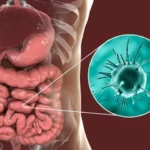Gabapentin 300 mg is a common drug with proven efficacy in managing nerve pain and most forms of epilepsy. As an oral anticonvulsant medication, Gabapentin works by altering the manner in which the brain and nervous system transmit messages. With Gabapentin as the active ingredient, the medication is sold under various brand names including Neurontin, Horizant, and Gralise. In addition to treating epilepsy, it also manages neuropathic conditions like diabetic neuropathy and post-herpetic neuralgia.
Learning about the Mechanism of Gabapentin 300 mg
The quintessence of Gabapentin 300 mg lies in its ability to modulate the activity of nerve impulses. When the nerve impulses become hyperactive, they might cause unusual sensations such as tingling, burning, or stabbing pain—symptoms of diseases like post-herpetic neuralgia. Gabapentin 300 mg calms the signals by influencing certain receptors found in the brain and spinal cord, thus inhibiting pain and seizure frequency. Even though it was originally used to control epilepsy, Gabapentin has since become a staple option for treating many other chronic illnesses involving nerve damage.
Gabapentin 300 mg and Nerve Pain Relief
Diabetic neuropathy or shingles (post-herpetic neuralgia) is among the most common uses for Gabapentin 300 mg. Diabetic neuropathy is damaged nerves from high blood sugars, having the tendency to develop pain in the form of shooting, numbness, or burning in the legs. Gabapentin 300 mg successfully alleviates this pain by modifying calcium channels within nerve cells, which play a crucial role in pain perception. Post-shingles pain is another disorder in which this drug holds enormous importance.
Epilepsy: A Core Indication for Gabapentin 300 mg
Gabapentin 300 mg is used to provide adjunct therapy for epilepsy, specifically partial-onset seizures. It starts in one area and can or cannot spread to other areas. Gabapentin inhibits excessive brain electrical activity, hence preventing seizures. Either alone or in conjunction with other drugs for anti-epileptic use, Gabapentin 300 mg plays a crucial role in stabilizing the brain’s nerve activity.
The 12 Types of Epilepsy Treated With Gabapentin 300 mg
There are types of epilepsy, a neurological condition. Gabapentin 300 mg is not found to be directly used to treat all types, but is specifically beneficial in partial seizures. The 12 types of epilepsy are:
Focal Epilepsy – Successfully treated with Gabapentin 300 mg, it begins in one part of the brain and can affect awareness.
Temporal Lobe Epilepsy – Often involves emotional symptoms or unusual behavior; Gabapentin 300 mg helps control seizure activity.
Frontal Lobe Epilepsy – Motor manifestations, including jerking, are noted; patients may be responsive to Gabapentin 300 mg if focal seizures are present.
Occipital Lobe Epilepsy – Visual disturbances are common; Gabapentin 300 mg may be part of the treatment plan.
Juvenile Myoclonic Epilepsy – Though not first-line, Gabapentin 300 mg is sometimes used adjunctively.
Benign Rolandic Epilepsy – Presented in children; Gabapentin 300 mg is used off-label in specific children.
Lennox-Gastaut Syndrome – Severe epilepsy syndrome; Gabapentin 300 mg is used in conjunction with other drugs.
Infantile Spasms – Not common, though Gabapentin 300 mg has been utilized in trials for resistant patients.
Absence Epilepsy – Other drugs are more usually employed, but Gabapentin 300 mg can be part of a multimodal regimen.
Reflex Epilepsy – Caused by unique stimuli; Gabapentin 300 mg can reduce the ce response to the precipitant.
Photosensitive Epilepsy – Triggered by flashing lights; Gabapentin 300 mg may lower the seizure threshold.
Post-Traumatic Epilepsy – After head injury; Gabapentin 300 mg is commonly prescribed for seizure prevention.
Gabapentin 300 mg for Anxiety and Migraine – Off-label Uses
Although not FDA-approved for migraine or anxiety, Gabapentin 300 mg is commonly administered off-label for both conditions. For anxiety, particularly generalized anxiety disorder (GAD) or social anxiety, Gabapentin 300 mg will relieve nervous system over-arousal. Due to its sedative properties, it relieves anxious thoughts and over-arousal. In migraine, Gabapentin 300 mg reduces the number of headaches by stabilizing brain nerve excitability. Use this only after taking your doctor’s advice for off-label use.
Dosage and Administration of Gabapentin 300 mg
Gabapentin 300 mg is usually initiated at a low dose with a progressive increment of dose to achieve the desired effect with minimal side effects. In pain caused by nerves, patients can be initiated with Gabapentin 300 mg once or twice daily and then elevated to thrice daily when required. For epilepsy, it is used as an add-on therapy in divided doses throughout the day. Since Gabapentin 300 mg is an oral capsule, it should be taken with water, either with or without food, based on tolerance.
Brand Names of Gabapentin 300 mg
There are several brand-name forms of Gabapentin 300 mg available on the market. The most common brand for nerve pain and epilepsy is Neurontin. Horizant is an extended-release form, typically prescribed for restless leg syndrome (RLS) and post-herpetic neuralgia. Gralise is an extended-release form used once a day, specifically for nerve pain. Behind various brand names, each of these forms contains the same active ingredient: Gabapentin.
Side Effects of Gabapentin 300 mg
Though generally well-tolerated, Gabapentin 300 mg may cause side effects in some. The most common are drowsiness, tiredness, and dizziness. Other people may experience limb swelling, vision changes, or nausea. Most of these will pass as the body adjusts. Severe side effects such as mood changes, thoughts about suicide, or shortness of breath require immediate attention from a medical expert. Monitoring is especially important during the initial treatment phase.
Withdrawal and Precautions with Gabapentin 300 mg
Abrupt withdrawal of Gabapentin 300 mg can lead to withdrawal symptoms such as irritability, anxiety, nausea, or seizures. Tapering the drug gradually under close medical supervision is an absolute requirement. Gabapentin 300 mg should be cautiously administered to patients with renal insufficiency since it is excreted by the kidneys. Pregnant or breastfeeding women should consult their prescribing physician for advice before taking this medication.
Lifestyle and Support During Gabapentin 300 mg Use
Taking Gabapentin 300 mg under a treatment plan can greatly enhance quality of life. Patients with epilepsy can have better seizure control that reduces the risks of falling or injury. Patients with chronic nerve pain might be able to walk again, sleep normally, and return to work or activities more easily. Having a support group, symptom diary, and regular appointments to take Gabapentin 300 mg are all good advice.
FAQs – Gabapentin 300 mg (One-liner Answers)
Q. What is the main use of Gabapentin 300 mg?
Gabapentin 300 mg is mainly used to treat nerve pain and epilepsy.
Q. Can Gabapentin 300 mg treat anxiety?
Off-label, Gabapentin 300 mg is sometimes used for anxiety.
Q. Is Gabapentin 300 mg addictive?
It has low abuse potential but should not be stopped suddenly.
Q. What are the side effects of Gabapentin 300 mg?
Common side effects include dizziness, drowsiness, and swelling.
Q. Can I drive while on Gabapentin 300 mg?
Not initially—wait to see how it affects your alertness.
Q. Can Gabapentin 300 mg be used for children?
It can be prescribed for children with seizures under a doctor’s guidance.















Leave a comment